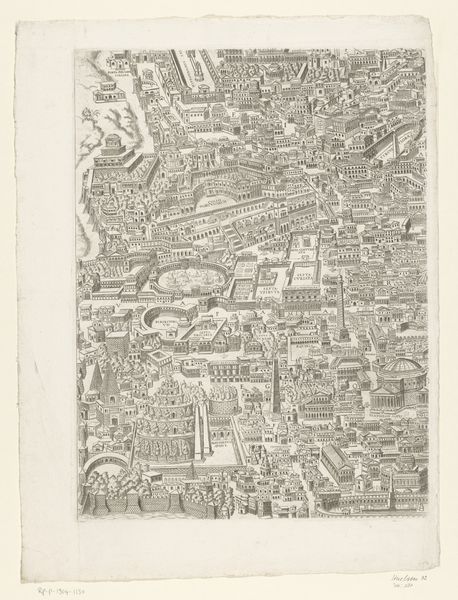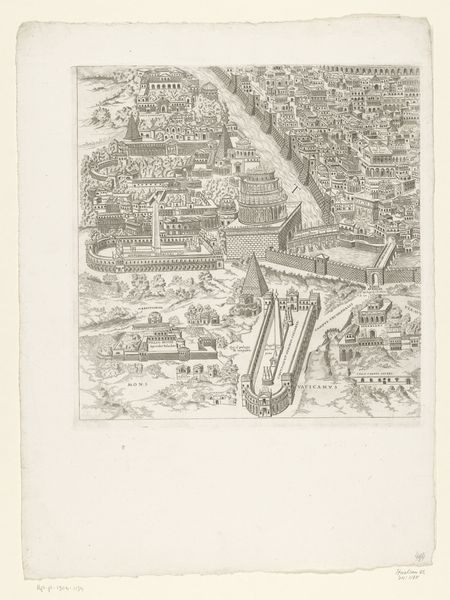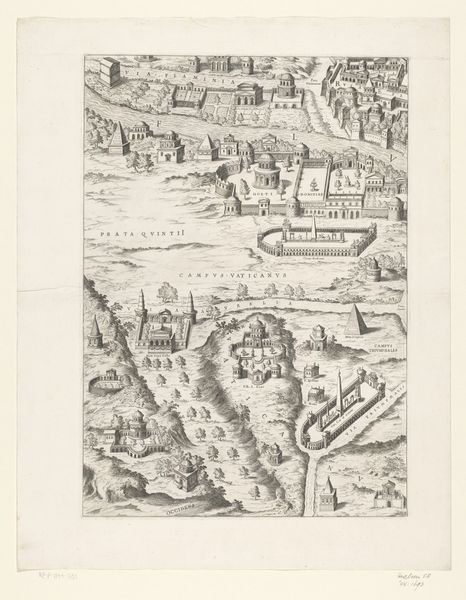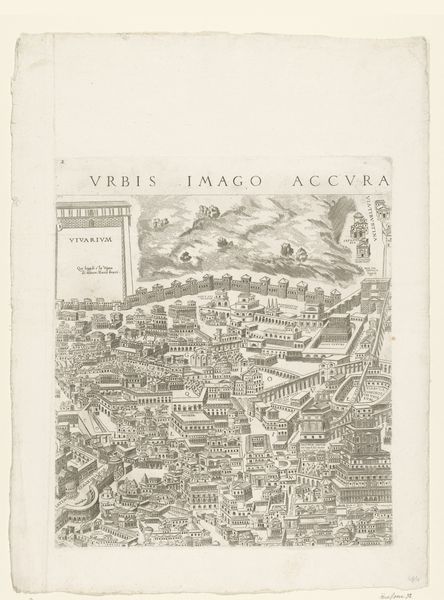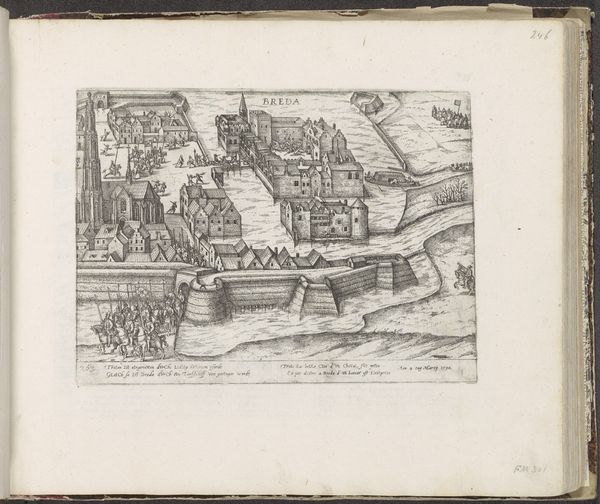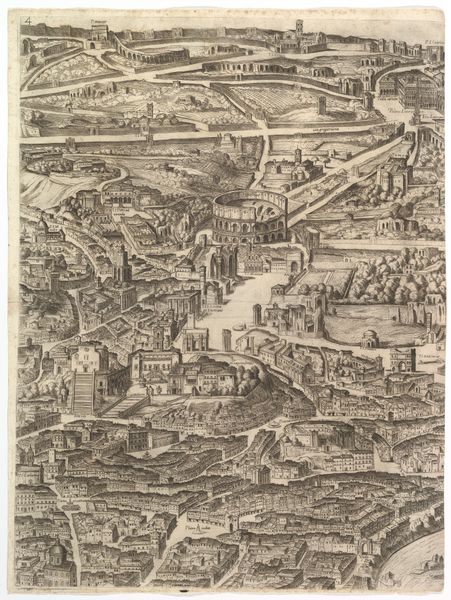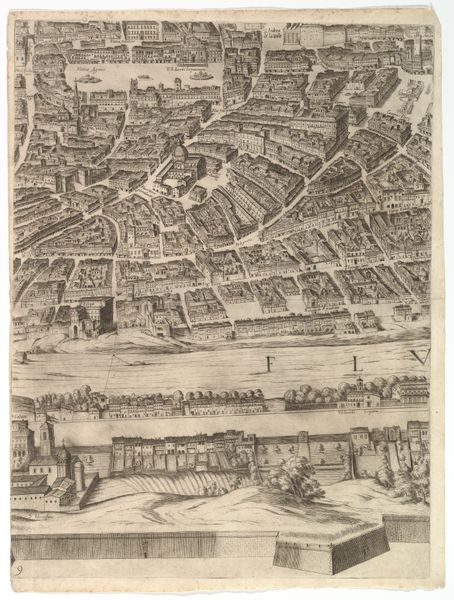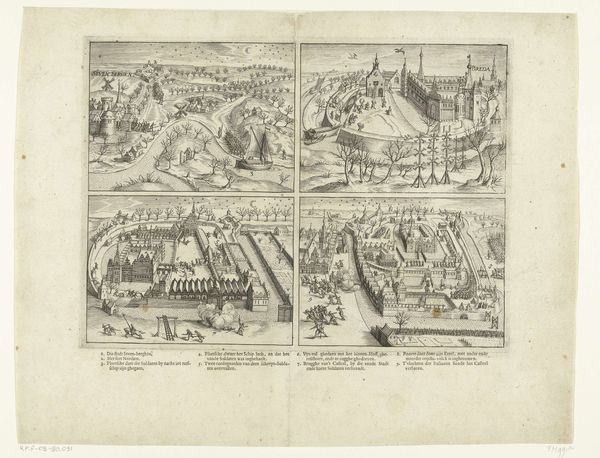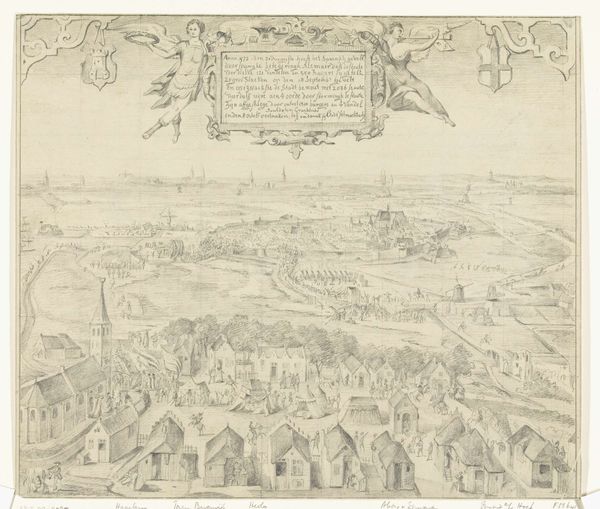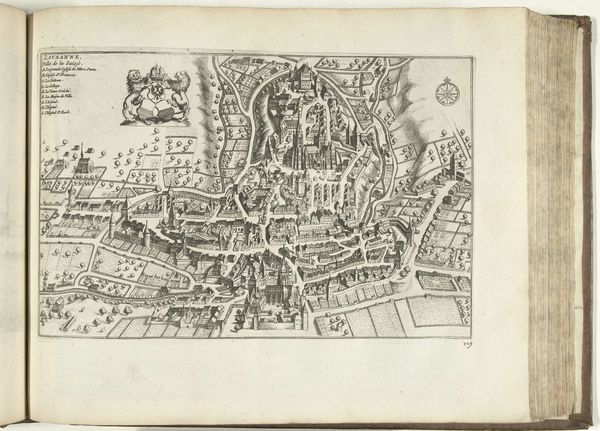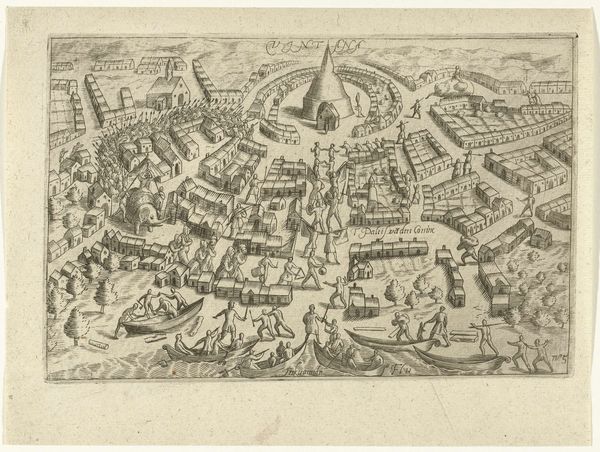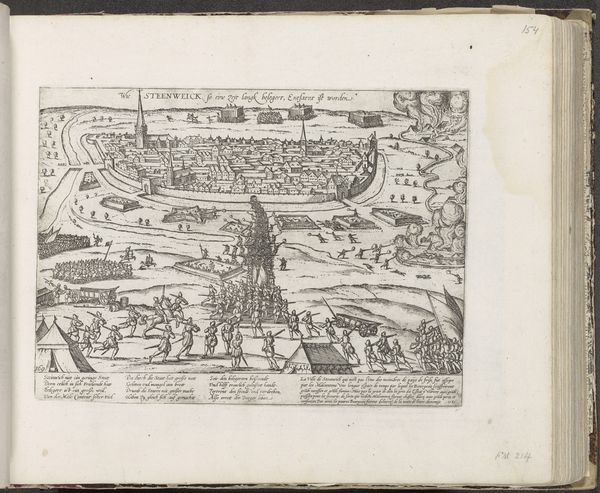
print, engraving
# print
#
geometric
#
ancient-mediterranean
#
cityscape
#
history-painting
#
engraving
Dimensions: height 411 mm, width 373 mm
Copyright: Rijks Museum: Open Domain
Editor: Here we have “Plattegrond van Rome in de Romeinse tijd (derde deel)”, a 1773 engraving. The level of detail is astounding; I'm really struck by the density and the rigid geometry of it all. How should we interpret this vision of Rome? Curator: I see this map as more than just a visual record of ancient Rome; it’s a statement about power, control, and the very construction of urban space. How do you think it reflects the social hierarchies of the time? Editor: Well, I can’t help but notice how many of the buildings seem dedicated to governance, performance, or military activities. Is that really a surprise, though? Curator: Not at all. Notice how the artist carefully delineates certain areas and emphasizes infrastructure. What does this suggest about the priorities and the very nature of Roman civilization at its peak? Who was included, who was excluded? Editor: I hadn't considered the element of exclusion, but it’s all pretty logical: enslaved people, for example, would’ve helped build many of the buildings that are shown. Are we meant to consider the labour behind everything depicted? Curator: Precisely! This piece asks us to think about whose stories are being told and whose are being intentionally omitted. The "grand narrative" often silences the voices and experiences of marginalized communities. Do you think an "objective" view is ever really possible? Editor: That's really thought-provoking; thank you. I initially saw a static representation, but it clearly embodies a complex social history, revealing what Rome chose to present and what it strategically concealed. Curator: Yes, reflecting on that act of curation, the choices inherent in any representation, reveals much about both the subject and the storyteller.
Comments
No comments
Be the first to comment and join the conversation on the ultimate creative platform.
